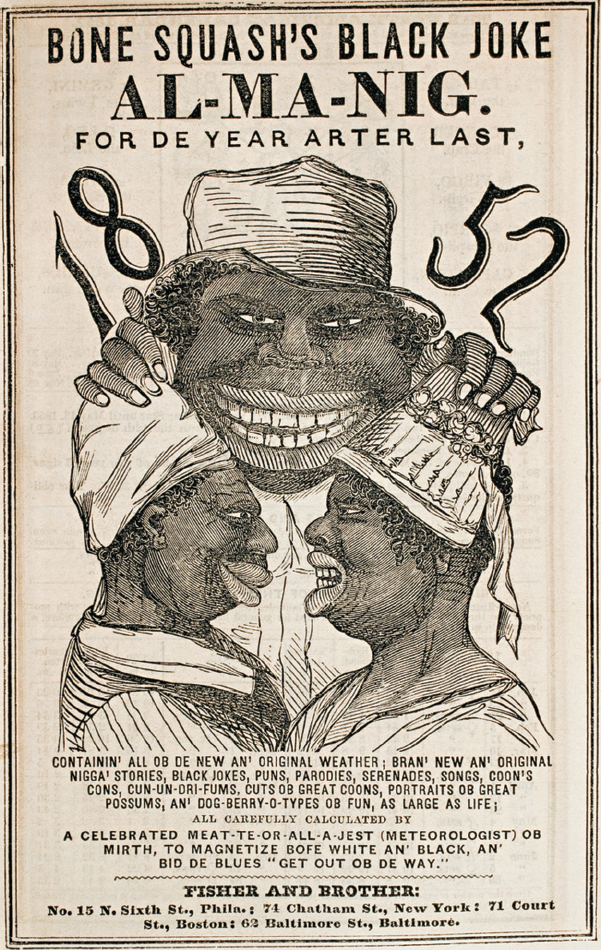Printed Page 357-328-319(cont.)
America’s History: Printed Page 357
America: A Concise History: Printed Page 328
America’s History: Value Edition: Printed Page 319
Abolitionism
Like other reform movements, the abolitionist crusade of the 1830s drew on the religious enthusiasm of the Second Great Awakening. Around 1800, antislavery activists had assailed human bondage as contrary to republicanism and liberty. Three decades later, white abolitionists condemned slavery as a sin and demanded immediate, uncompensated emancipation. Their uncompromising stance led to fierce political debates, urban riots, and sectional conflict.

Rampant Racism
Minstrel shows and their music were just two facets of the racist culture of mid-nineteenth-century America. Exploiting the market for almanacs among farmers and city-folk alike, the publishing firm of Fisher and Brother produced the Black Joke Al-Ma-Nig for 1852. Like other almanacs, it provided astrological charts, weather predictions, and a detailed calendar of events. To boost sales, the almanac included “new an’ original nigga’ stories, black jokes, puns, parodies” that would “magnetize bofe white an’ black.” Such racist caricatures of black faces and language influenced white views of African Americans well into the twentieth century. Courtesy: The Library Company of Philadelphia.